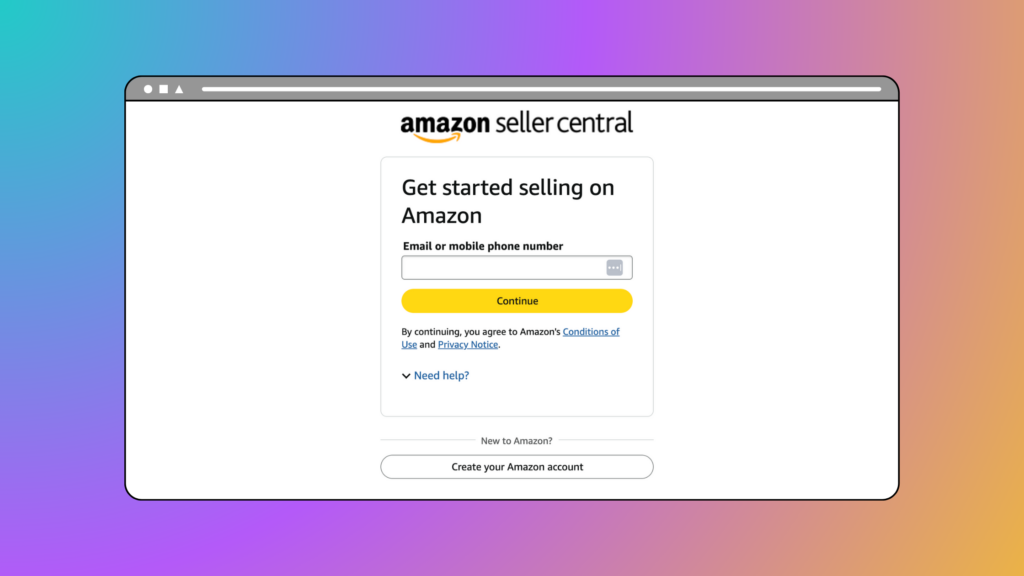- Blog
-
For Sellers
Product research guide: How to find profitable products in 2025
Picking the wrong product can kill your margins fast. This guide shows how top sellers find what works before spending a dime.

Most new Amazon sellers dive headfirst into picking products based on gut instinct or what they think will sell. However, choosing the wrong product doesn’t just mean lost time and money.
It can damage your account health, tie up capital in dead inventory, and leave you competing in oversaturated markets where profit margins disappear faster than your motivation. The cost of a bad product choice can easily reach thousands of dollars before you realize the mistake.
Don’t worry. This guide will walk you through a systematic, data-driven approach to finding products that actually generate consistent revenue. We’ll cover the complete validation process from initial idea generation to final profitability confirmation, plus the specific tools that turn guesswork into confident buying decisions.
What is product research and why it matters for Amazon sellers
Product research means evaluating a product’s profitability potential before you invest a single dollar. Think of it as your financial safety net. The process that separates successful sellers from those who burn through their savings chasing bad ideas.
The foundation rests on three critical pillars: demand, competition, and profitability. Demand tells you if people actually want the product. Competition reveals how hard you’ll need to fight for sales. Profitability determines whether you’ll make money after all fees and expenses.
How to do product research
Start by defining your criteria before you fall in love with any product idea. Set your price range (typically $20-50 for beginners), target profit margins (25-35% minimum), and physical constraints like size and weight. These boundaries keep you focused and prevent emotional decisions.
Generate ideas systematically using multiple sources rather than hoping inspiration strikes. Amazon’s native tools, review analysis, and cross-platform opportunities all feed your pipeline with validated concepts. The goal is quantity first—you’ll filter ruthlessly in the next steps.
Validate each idea with hard data from tools that show real sales volume, search trends, and competition levels. Look for products with at least 10 daily sales and a Best Sellers Rank below 5,000 in their main category. Your cumulative keyword search volume for the top 2-3 keywords should exceed 10,000 monthly searches.
Analyze competition by studying review counts and listing quality on the first page of results. You want to see 2-3 products with 50 reviews among the top competitors—this signals a market opportunity without overwhelming competition. Check how many active sellers compete for the same keywords and whether you can differentiate your offering.
Calculate true profitability using Amazon’s fee structure, your sourcing costs, shipping expenses, and advertising budgets. Don’t forget storage fees, return processing, and the 15% referral fee that applies to most categories. Your minimum viable margin should cover these costs, plus provide a decent profit.
Check compliance and restrictions before you get too excited about any product. Amazon restricts certain categories, brands, and product types. HAZMAT items require special handling. Some categories need approval before you can sell. Save yourself the headache by confirming you can actually sell the product legally and profitably.
6 proven ways to discover profitable product ideas
- Amazon’s Best Sellers lists update hourly and show exactly what people are buying right now. Browse by category to understand customer preferences and identify trending items. The Movers & Shakers section reveals products with the biggest daily gains in sales rank, often indicating emerging trends or successful marketing campaigns.
- Product Opportunity Explorer provides detailed analytics based on Amazon’s internal data about search, purchase, and review patterns. It categorizes products into customer niches based on actual shopping behavior, then filters by demand, price, ratings, and search volume to highlight underserved areas. This tool identifies untapped opportunities by analyzing unmet customer needs from reviews and returns.
- Review mining reveals improvement opportunities that competitors have missed. Read negative reviews to understand product weaknesses, then consider how you could create a superior version. Pay attention to recurring complaints about durability, functionality, or design—these represent clear paths to differentiation.
- Cross-platform arbitrage opportunities emerge when products sell for different prices across various retailers. This approach works particularly well for established products with proven demand. You’re not creating anything new, just finding more profitable sourcing or distribution channels.
- Seasonal and trend analysis helps you time product launches and inventory decisions. Products with year-round demand provide steadier income than highly seasonal items. Use Google Trends alongside Amazon data to understand demand patterns and plan your inventory cycles accordingly.
- AI-assisted brainstorming through ChatGPT can generate creative product ideas based on specific criteria. Try prompts like “List 10 eco-friendly kitchen products under $30,” then refine with follow-up questions about competition, sourcing, or target demographics. Always validate AI suggestions with real data from research tools.
Evaluating your product ideas
Demand analysis starts with search volume and sales estimates. Look for products with consistent monthly search volume above 10,000 for their primary keywords. Best Sellers Rank should stay below 5,000 in the main category, with at least 10 estimated daily sales. Evergreen products that sell year-round provide more predictable income than seasonal items.
Competition assessment focuses on review counts and listing quality among the top results. Count how many products on page one have fewer than 50 reviews—these represent opportunities for new entrants. Analyze listing quality by checking image clarity, title optimization, and bullet point completeness. Poor listings signal an opportunity for a better presentation.
Profitability calculations require factoring in all costs, not just the purchase price. Include Amazon’s 15% referral fee, FBA fees (if applicable), shipping to Amazon, storage costs, advertising spend, and your sourcing expenses. Aim for 25-35% net profit margins after all expenses to ensure sustainable business growth.
Restriction and compliance checks prevent costly mistakes before they happen. Verify that you can legally sell the product in your target categories. Check for brand restrictions, HAZMAT classifications, and approval requirements. Some products require certifications or testing that add significant cost and complexity to your business.
Red flags & products to avoid
Oversaturated markets with thousands of similar products make profitability nearly impossible. Avoid keywords that return more than 2,000 search results unless you have significant capital for advertising and differentiation. Categories dominated by major brands typically offer little room for new sellers to gain meaningful market share.
Restricted, branded, or HAZMAT products create legal and logistical nightmares. Amazon restricts many categories and requires approval for others. Branded products invite intellectual property disputes. HAZMAT items need special storage and shipping that dramatically increase costs and complexity.
Highly seasonal or fad items can leave you holding worthless inventory when trends change. Products that sell primarily during holidays or specific seasons require careful timing and inventory management. Fad items based on temporary popularity can become worthless overnight when consumer interest moves elsewhere.
Fragile or oversized products increase shipping costs, return rates, and customer complaints. Items over 2-3 pounds or larger than standard packaging dimensions face higher FBA fees. Breakable products generate negative reviews and replacement costs that eat into profits. Focus on small, lightweight, durable items for the best margins.
Tools you can use to make things easier
Amazon’s free research tools
Product Opportunity Explorer analyzes Amazon’s internal data to identify profitable niches and product opportunities. Access requires a professional seller account and appears under “Growth” in Seller Central. The tool provides insights on search volume, units sold, average prices, seller counts, and seasonality trends based on real customer behavior.
Best Sellers lists update hourly across all categories and show exactly what customers are buying. Movers & Shakers highlights products with the biggest daily sales rank improvements. Hot New Releases tracks newly launched products gaining traction. These lists provide immediate insight into current market demand.
Revenue Calculator helps estimate fees, margins, and profits by comparing FBA and merchant fulfillment costs. Input any ASIN, UPC, or product identifier to see detailed cost breakdowns. The tool handles bulk calculations and supports new products not yet listed on Amazon.
Tactical Arbitrage for online arbitrage
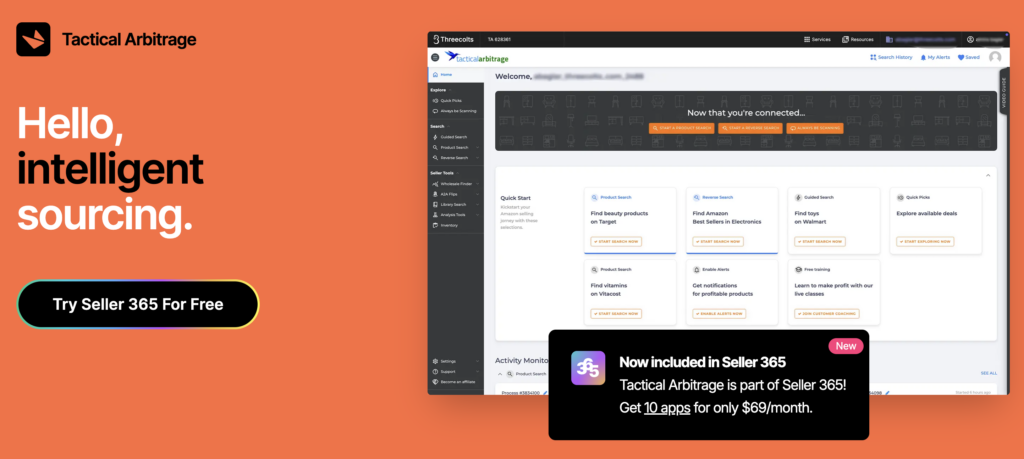
Cross-platform price comparison across 1,500+ stores reveals arbitrage opportunities where products sell for different prices on various websites. The software automatically searches multiple retailers simultaneously, saving hours of manual research while identifying profitable price gaps.
Automated searches and profit alerts work around the clock to find new opportunities. Set your criteria once, then let the system scan continuously for products that match your requirements. Get notifications the moment profitable items appear, so you can act before competitors discover the same opportunities.
Wholesale catalog analysis processes entire supplier inventories to identify profitable products instantly. Upload a supplier’s catalog and let Tactical Arbitrage analyze every item for Amazon profitability. This feature turns hours of manual research into minutes of automated analysis.
ScoutIQ for book flipping
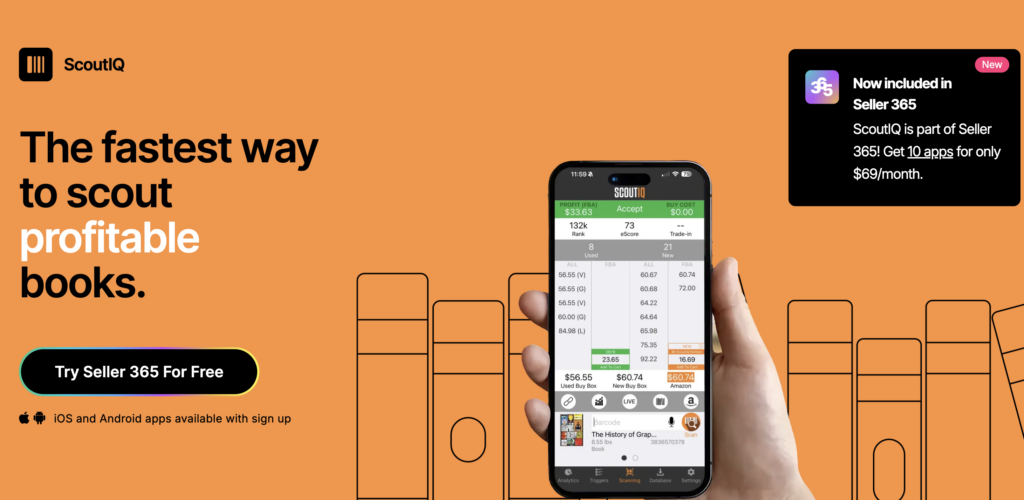
Instant book profitability analysis uses the proprietary eScore™ system that shows actual sales frequency over the past six months rather than confusing rank numbers. This demand tracking helps you balance profit potential against realistic sales expectations for each book you consider purchasing.
Offline scanning capabilities let you research books even without an internet connection. Download the database to your phone and scan barcodes anywhere—thrift stores, library sales, garage sales—without worrying about wifi availability. Results appear in under a second for efficient sourcing sessions.
Team management features support scaled operations across multiple locations. Add team members with individual performance tracking and centralized control. The hidden profit mode keeps your margins confidential while showing scouts clear accept/reject decisions for each scanned item.
Scoutify for retail arbitrage
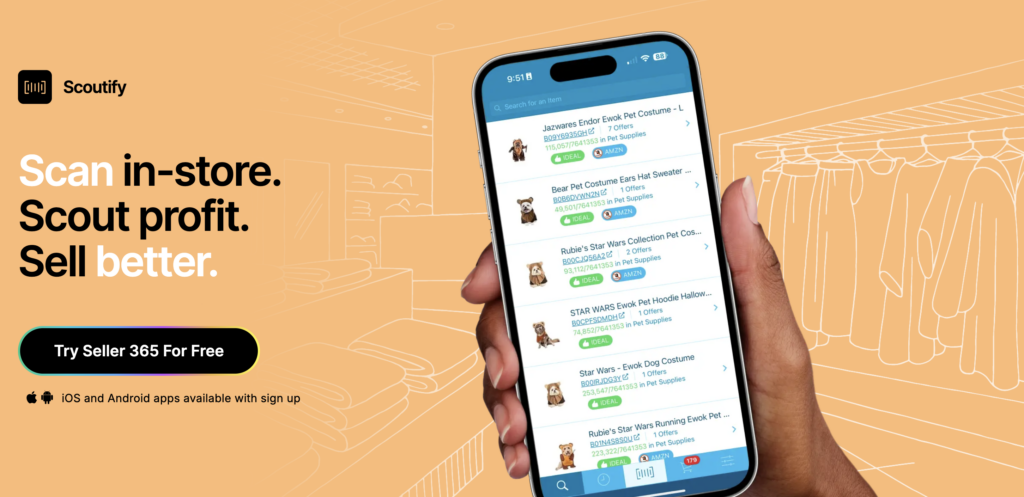
In-store profit analysis provides complete financial data right on your phone while shopping. Scan any barcode to see exact profit margins with all Amazon fees included—referral fees, FBA costs, and shipping expenses. Know your true profitability before you reach the checkout line.
Restriction checks and buy lists prevent costly mistakes and streamline your sourcing workflow. Get instant alerts about category restrictions or selling limitations. Create buy lists that track costs, suppliers, and quantities as you shop, then export directly to InventoryLab for batch processing.
Sales history and competition insights use your personal purchase and sales data to improve future decisions. Learn from past wins and avoid previous mistakes. See current competition levels and pricing trends to make confident sourcing choices based on market reality.
ScoutX for instant Amazon product analysis
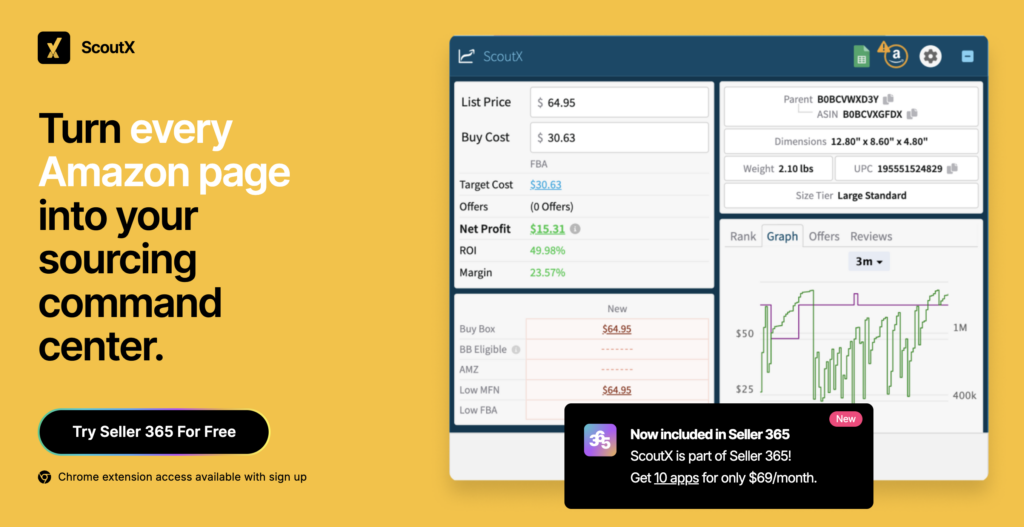
One-click profit and ROI calculations transform any Amazon product page into a complete analysis dashboard. Get instant access to 60+ data points, including profit margins, sales rank, fees, and competition data, without leaving the product listing. No more switching between tabs or manual calculations.
Variation comparison and competition insights let you analyze every size, color, and bundle option side-by-side to find the most profitable version. See competitor prices, fulfillment methods, and inventory levels to identify market gaps you can exploit with better pricing or service.
Real-time sales rank and Buy Box tracking provide current market data for informed decisions. Monitor sales velocity through rank patterns and understand demand levels. Track Buy Box ownership and pricing changes to time your entry into competitive markets.
Your next steps to profitable sales
Sourcing and supplier validation begin once you’ve identified profitable products. Research potential suppliers through trade directories, trade shows, or online marketplaces. Verify their legitimacy through references, samples, and communication quality. Negotiate not just on price but also minimum order quantities, payment terms, and quality control processes.
Listing optimization drives conversion rates that determine your actual profitability. Use relevant keywords in titles and bullet points based on your research. Create compelling images that highlight key features and benefits. Write clear, benefit-focused product descriptions that address customer concerns revealed in your competitive analysis.
Launch strategy and monitoring require ongoing attention even after your product goes live. Start with competitive pricing to gain initial sales velocity and reviews. Monitor your metrics through Seller Central dashboards and adjust pricing, advertising, or inventory based on performance data. Track competitor actions and market changes that might affect your product’s success.
The tools mentioned above—Tactical Arbitrage, ScoutIQ, Scoutify, and ScoutX—work together as part of Seller 365, giving you 10 essential Amazon seller tools for just $69 per month. Compare that to purchasing each tool separately, and you’ll save hundreds while getting additional prep, repricing, feedback, and profit tracking capabilities.
Start your free trial of Seller 365 and experience how professional-grade research tools transform product hunting from guesswork into systematic profit generation. Get access to all four research tools plus six other essential apps that streamline every aspect of your Amazon business.




















